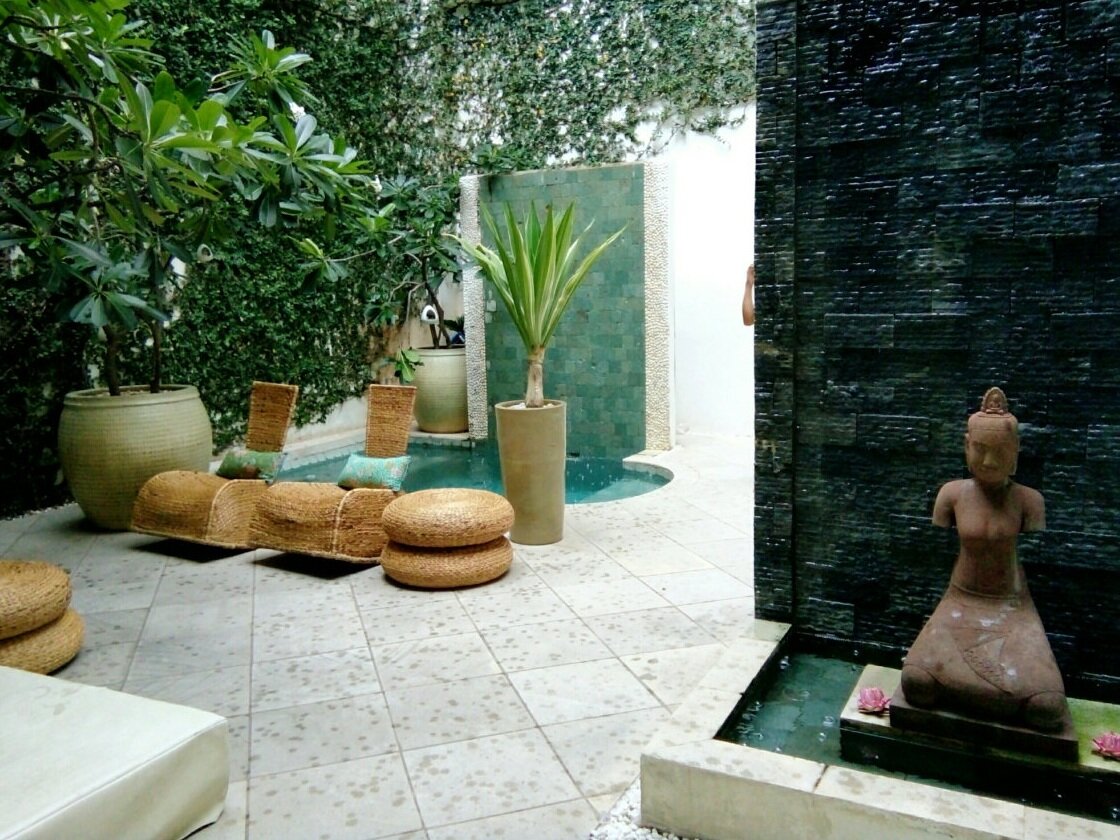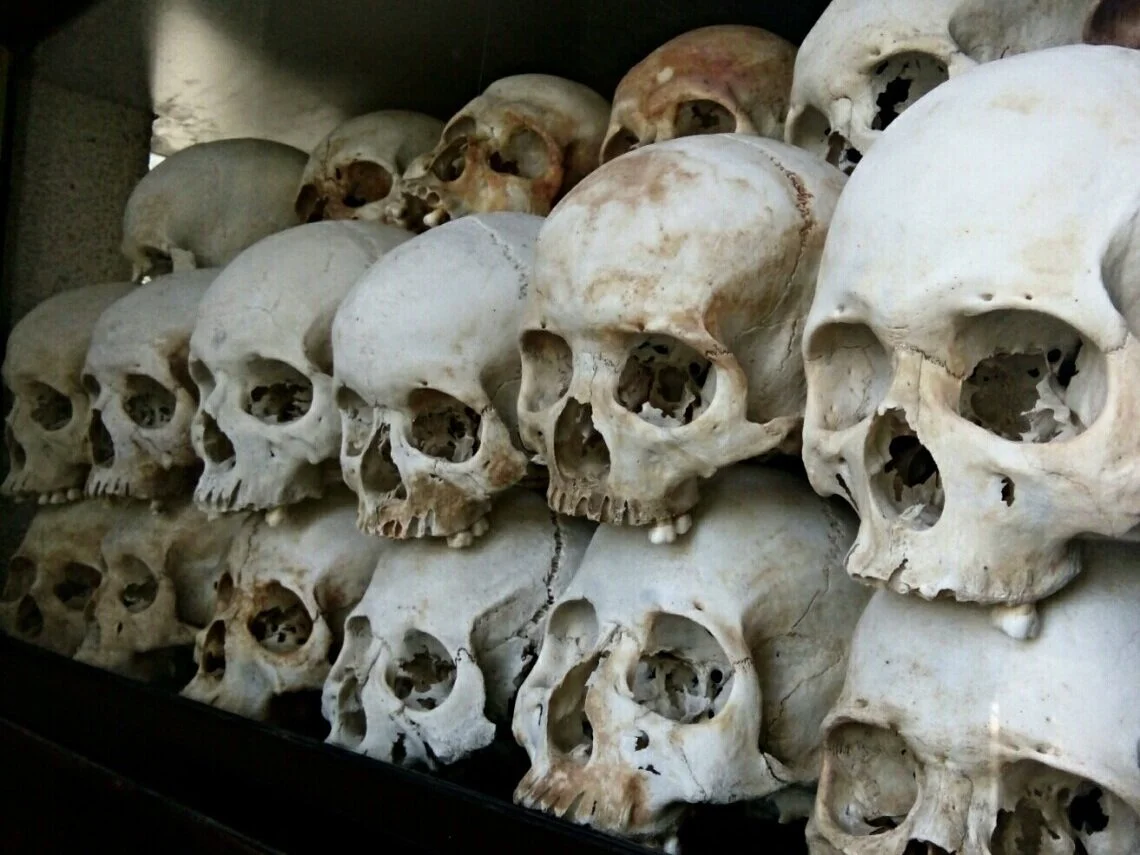Phnom Penh: The Pearl of Asia
While researching for my trip to Phnom Penh, I found that those who visited either really loved the city or really hated it, but whichever way they swung they felt really, really adamant about it. To decide for myself, I spent three days in the self-proclaimed “Pearl of Asia” and have come to fall somewhere in the middle.
At 2.2 million people, the capital of Cambodia can be overwhelming to say the least. It seems that everyone is always doing something or ready to go at a moments notice - fixing bikes, cooking on the street, conversing in cafes, honking incessantly at nothing in particular, yelling the words “tuk tuk!” to anyone within a 50 foot radius, sweeping water with brooms (yes). Cambodians are a busy bunch. Or perhaps my perspective is skewed after being in Indonesia where everyone just kind of hangs out lazily doing nothing in particular at all.
a dark past
My main goal in visiting Phnom Penh was to learn more about the history of Cambodia, particularly the Khmer Rouge and the horrific genocide that occurred at its hands. Cambodia, and Phnom Penh especially, continues to feel its effects today.
The Khmer Rouge, a communist regime led by Pol Pot, overtook Cambodia in the late 1970s and committed one of the world’s most atrocious (and often untold) genocide. In the span of four years, the regime murdered 1.7 million of its own citizens without batting an eye. To realize that this occurred only 35 years ago is absurdly baffling. Sadly, over 50% of the population today is under 25, but Cambodia is coping and rebuilding themselves beautifully and Phnom Penh is no exception.
why visit phnom penh?
Genuine kindness
On a much happier note, Cambodians are a genuinely cheerful bunch that are so stinking nice! They go above and beyond to ensure you are comfortable and it is rare to not see a smile on their faces. Our tuk-tuk driver even walked us across eight lanes of traffic! This may not sound like much, but it is something you really appreciate after realizing that Asia is really just a massive game of Frogger without any of the do-overs or extra lives.
Budget-Friendly
You can go nuts here without breaking the bank, or even a small fraction of it. Admittedly, I did a little pampering and a wee bit of splurging (by backpacking standards). There are a few really great cafes to enjoy, with my favorites being The Shop and Nuk Café. I also had a massage and exfoliation for $20, which is honestly kind of expensive for this part of the world (Bliss Spa, Street 240). My deep-tissue massages apparently included a stomach and elbow massage, each of which had a healthy rubdown. I admit that it was a little odd, though I did not protest.
The history
In school, everyone learns about World War II and the abominable persecution of 6 million Jews. Other well-known atrocities include the colonization and destruction of North American indigenous peoples, the Aboriginals of Australia, and killings within Rwanda. Yet it seems that little is known about the Cambodian genocide.
In brief, the Khmer Rouge sought to establish a complete communist society leading to a genocide of 1.5 -3 million people from 1975-1979. To carry out their mission, they killed ethnic and religious minorities, those appearing intellectual or wealthy, and anyone against their revolution. Those with glasses were too smart, those with soft hands were too wealthy, all others were possible rebels. Pol Pot promised the people better lives and they believed him; instead he murdered them. Cambodians were tortured in prisons, killed in fields and put in mass graves, and sent to die in labor camps.
The Killing Fields is a popular “attraction” where visitors see exactly what the name suggests: fields where thousands were brought to be killed. The site is emotionally moving for obvious reasons, but what resonated with me most was its intimate nature and accessibility. The tragedy is so tangible there. For example, there are even bones still laying misshapenly on the ground and signs kindly asking you to not step on them. One moment I was looking at a sign and out of the corner of my eye I saw trash on the ground and thought, how insensitive for someone to litter in such a place. Then I looked down. It wasn’t trash. It was clothing. I was stepping on the rags of a person murdered years ago. That’s the moment it all hit me. I was informed that the staff spends a few days each month to clean up more bones and tattered clothing still laying in the Earth. 35 years later.
Equally moving was my visit to S-21, a high school turned prison and torture center. I first read about this prison in a National Geographic article when I was young, and it stuck with me. It did not make sense (and still doesn’t) that such hate could be real. A trip to Cambodia would not have felt complete without a visit to S-21 to pay my respects and be better educated on the genocide. The complex can be explored individually by walking in the cells, learning the history, and seeing pictures of each prisoner and victim, with some more difficult to view than others.
I found the interrogation rooms to be the toughest to visit and comprehend. Inside each room is a single bed with a photo on the wall showing the room as it was originally found - with a dead body lying on a bed or splayed on the floor. The same bed and foot shackles in the picture are the very ones right in front of your eyes. It was startling how close I was to such immense pain and suffering. As I was leaving, I had the honor of meeting one of the survivors; of the thousands that passed through S-21, only seven survived. He, alongside the other survivors and Cambodian government, seek to end crimes against humanity and ensure peace for Cambodia. I bowed to him and he smiled. After unfathomable pain and emotional destruction he still showed a beautiful toothless smile. It is incredible to witness a person’s perseverance and ability to maintain hope for peace despite falling victim to its repulsively evil side.
A Pearl of its Own
Overall, I don’t think I need to go back to Phnom Penh but I am sure glad that I went. At first, I didn’t quite understand why it was called the “Pearl of Asia,” I mean, it’s not exactly known for its cleanliness and shiny buildings. Yet after spending some time there it all started to make sense. It may have experienced a horribly gritty past, but it is finally turning into something beautiful and it deserves to wear that pearly title with all the pride in the world.







